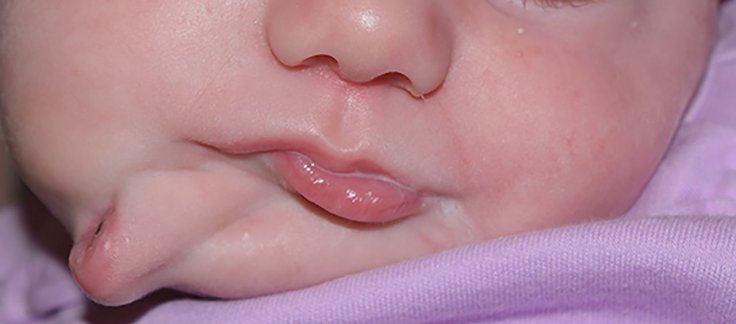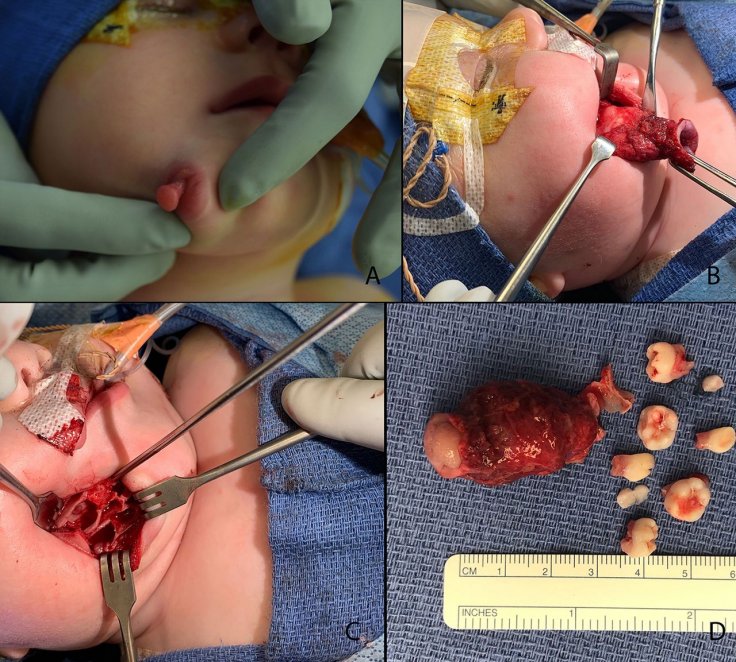From an embryo to a fetus, babies grow rapidly with their body organs developing day by day within a span of three trimesters inside the mother's womb. With the development in technology, multiple medical ultrasounds, which can track the stages of a baby's growth, help in knowing any abnormalities or disorders even before its birth.
In a rare case, a baby girl was born at 40 weeks and 4 days in Charleston, South Carolina, with an extra mouth on her face. It was formed due to the rare condition called Diprosopus, which means duplication of facial parts. It is understood that the infant is one of 35 people known to have suffered from this congenital disorder since 1900.
This abnormal growth on the right side of her face was detected in the 28th week of pregnancy during prenatal ultrasonography, but doctors thought it would be a tumor or cyst. They realized it to an actual mouth with lip, cavity, teeth, and tongue only upon the child's birth.

Meanwhile, at 2 weeks of age, the doctors spotted an external component at the skin level that they believed to be saliva. Also, the small tongue was seen moving in synchronization with the actual tongue while the baby was being fed. Nevertheless, the baby appeared to be healthy with no oral incompetence.
The Second Mouth Removed
However, the infant's 0.8-inch second mouth, which had no connection to her main mouth, has been removed from the face of the six-month-old baby girl. The doctors have also removed an extra bone, esophagus tissue, mouth mucous membrane, salivary gland, six un-erupted teeth as well as some muscle during the surgery.

"At six-month follow-up, the incisions were well healed and the patient was feeding without difficulty but had persistence of the inability to depress the right lower lip, which could represent agenesis of oral depressor muscles or their innervation," according to BMJ Case Reports.









